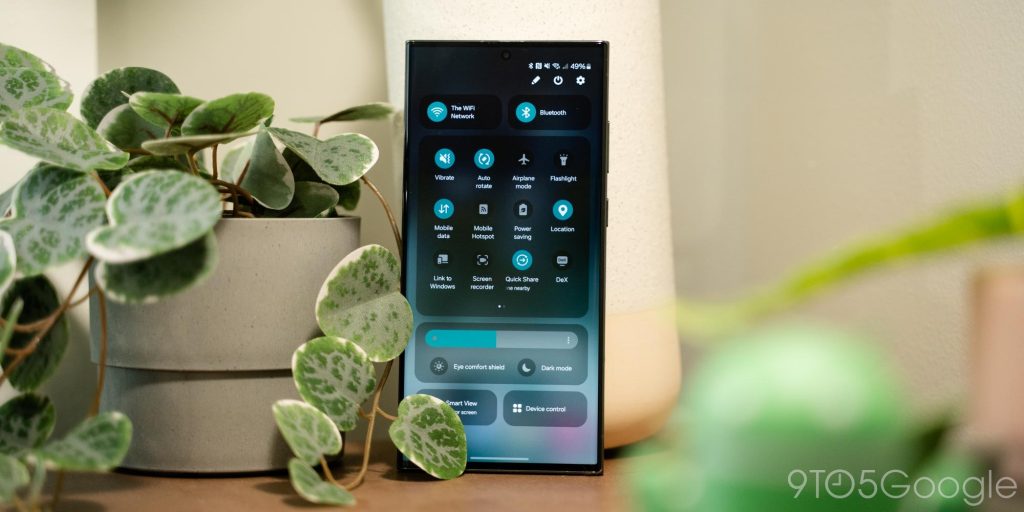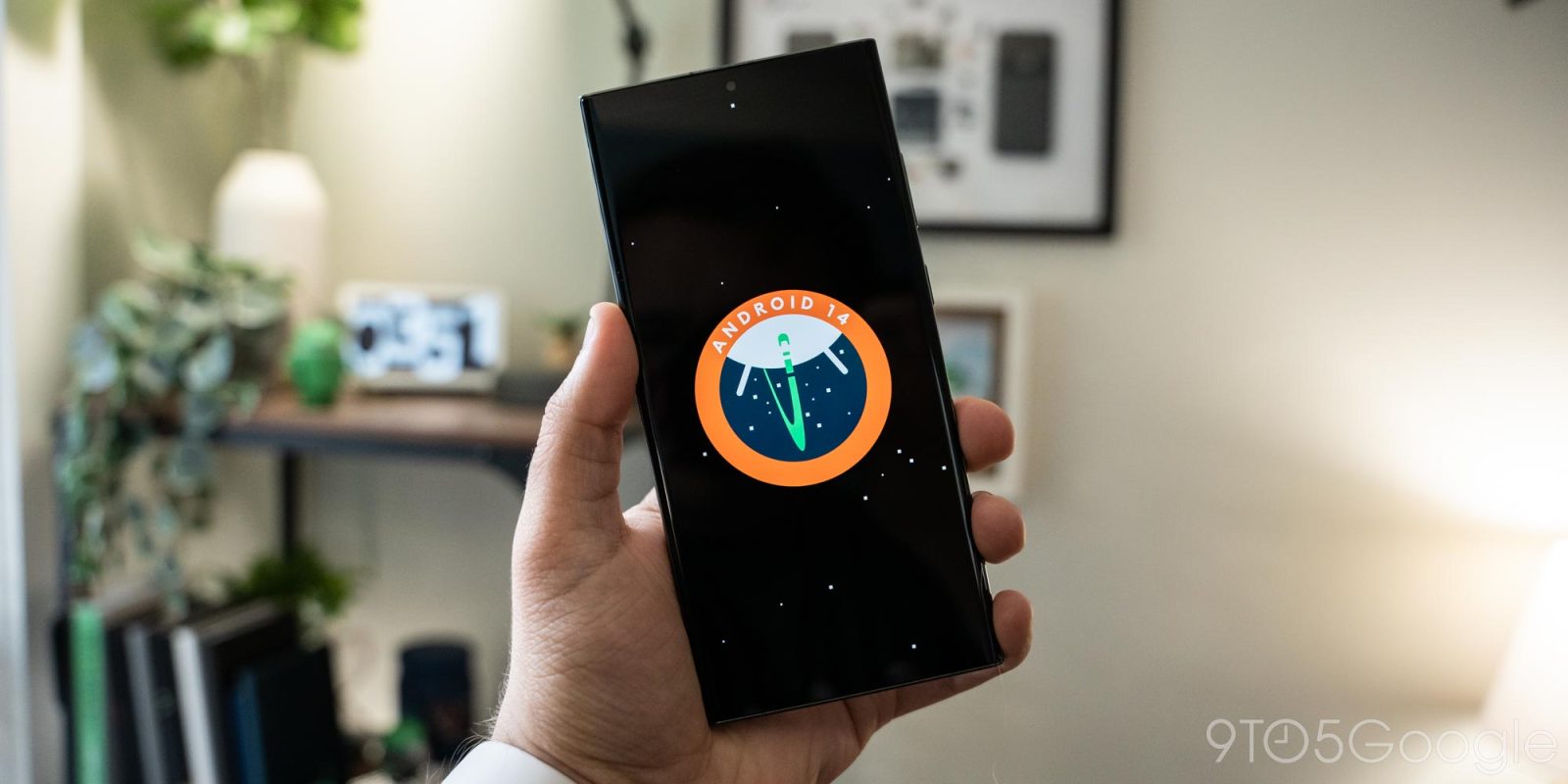
Samsung has officially launched the Android 14 update, One UI 6, with new features, updated design, and more. Here’s everything new, a list of Samsung Galaxy devices that will get Android 14, and everything else you’ll need to know.
What’s new in Android 14 on Samsung Galaxy?
Android 14, in and of itself, isn’t a major update, but it brings some major changes to the world’s most popular smartphone operating system. These changes, which we previously detailed, include additions like UltraHDR support, improvements to the Share menu, lock screen changes, official support for Flash notifications, and more.
However, many of the new features on Pixel phones are already present on Samsung smartphones, such as new lock screens. So what’s new in Galaxy?
One UI 6 is Samsung’s latest Android interface, built on Android 14, and it brings some notable changes such as a new “Quick Panel” design for quick settings, an option to change the wallpaper based on the time of day or certain modes, and expansions to lock screen customization options. , a new camera widget, new weather widgets, as well as new emojis and a new default system font.

Samsung devices running Android 14 – full list
On October 30, 2023, Samsung officially launched the Android 14 update for its current flagship phones, just 26 days after the update for Google Pixel devices. That’s six days after last year’s release, but much faster given that the Pixels were updated so early in 2022.
Here’s the complete list of Samsung Galaxy devices currently You have Android 14.
This list will be updated continuously over the coming months with the most recent additions marked in bold. Check back regularly!
Galaxy S devices running Android 14
In October 2023, Samsung began rolling out One UI 6 to the Galaxy S23, S23+, and S23 Ultra in select countries around the world. This began primarily in Europe, but has since expanded globally including the United States. In mid-November, Samsung expanded the update to the Galaxy S22 series, as well as to the newly released Galaxy S23 FE, but only on Exynos models, and the update also appeared on Galaxy S21 devices.
- Galaxy S23 – Available globally
- Galaxy S23+ – Available globally
- Galaxy S23 Ultra – Available globally
- Galaxy S23 FE – Exynos models only
- Galaxy S22 – Available globally
- Galaxy S22+ – Available globally
- Galaxy S22 Super – Available globally
- Galaxy S21 – Available in Europe
- Galaxy S21+ – Available in Europe
- Galaxy S21 Ultra – Available in Europe
- Galaxy S21 FE – Available in European, US carriers
Galaxy foldable phones running Android 14
On November 21, Samsung began rolling out Android 14 to its latest foldable devices, the Galaxy Z Fold 5 and Galaxy Z Flip 5, but only on Verizon Wireless in the US so far.
Galaxy A and Galaxy M devices running Android 14
The first Galaxy A series device to get the One UI 6 update was the Galaxy A54, which got the update from AT&T in the US on November 21. A day later, the very affordable Galaxy A73 was updated in Iran. The A34 and Galaxy A14 5G weren’t far behind. Samsung has also since released Android 14 for the Galaxy A24 and Galaxy A53. The Galaxy A52s has also been updated in most regions including Europe and India.
- Galaxy A54 – Widely available
- Galaxy A53 – Available in the UK, US and more
- Galaxy A34 – Available in Europe
- Galaxy A24 – Available in the Middle East and North Africa
- Galaxy A14 – Available globally
- Galaxy A73 – Available in Iran
- Galaxy A52s – Available in Europe and India
Meanwhile, in Samsung’s Galaxy M series, the Galaxy M53 has been updated in Germany, while the Galaxy M34 has been updated in India. The list below will be updated as more devices are updated.
- Galaxy M53 – Available in Germany
- Galaxy M54 – Available in the Middle East
- Galaxy M34 – Available in India
Galaxy tablets running Android 14
On November 22, Samsung released its first Android 14 update for a tablet, and the Galaxy Tab S9 series is now eligible for the update in most countries, as is the Galaxy Tab S8 series in select regions.
In December, Samsung also released the One UI 6 update for its latest tablets, the Galaxy Tab S9 FE and Tab S9+ FE, as well as expanding it to other regions on the Tab S8.
- Galaxy Tab S9 – Available in Europe, USA and Canada
- Galaxy Tab S9+ – Available in Europe, USA and Canada
- Galaxy Tab S9 Ultra – Available in Europe, USA and Canada
- Galaxy Tab S9 FE – Available in Europe
- Galaxy Tab S9+ FE – Available in Europe
- Galaxy Tab S8 – Available in Europe, USA and Korea
- Galaxy Tab S8+ – Available in EuropeE, United States, Korea
- Galaxy Tab S8 Ultra – Available in Europe, USA and Korea
Will my Galaxy device get Android 14?
Of course, not every Samsung smartphone or tablet will get Android 14. The update is being provided in line with Samsung’s current update policy. This means that any major software released since 2021 is eligible, as they all have at least four major Android OS updates. However, the Galaxy S20 series, Galaxy Note 20 series, Galaxy Z Fold 2 and Galaxy Z Flip/5G released for 2020 will not be updated, as Samsung has confirmed after an error on the company’s part.
In general, any Samsung smartphone or tablet released in the past two years will be updated to Android 14. For slightly older devices, the update will still be available, but only for more expensive devices like the Galaxy S, Galaxy Z, and Galaxy S. Galaxy Tab S lineup.

Samsung Android 14 update schedule
The status of Samsung’s official schedule for Android 14 and One UI 6 updates has been a bit hit or miss, with one schedule removed early. But, in November, the company posted a very official-looking schedule for Samsung Members in some countries, giving us a good idea of what to expect.
The list below is based on Samsung’s official Android 14 schedule, and we’re constantly updating it as new devices update.
If last year’s Android 13 update is anything to go by, Samsung will likely outgrow its core lineup long before 2024 arrives.
October 2023
November 2023
December 2023
- Galaxy Tab S9 FE – December 5
- Galaxy Tab S9+ FE – December 5
- Galaxy S21 FE – December 5
- Galaxy A52s – December 5
- Galaxy A14 LTE – December 5
- Galaxy A33 – December 5
- Galaxy M33 – December 6
- Galaxy F34 – December 10
- Galaxy M34 – December 11
- Galaxy M54 – December 14
- Galaxy F14 – December 14th
- Galaxy Z Fold 4 – December 2023
- Galaxy Z Fold 3 – December 2023
- Galaxy Z Flip 4 – December 2023
- Galaxy Z Flip 3 – December 2023
- Galaxy A72 – December 2023
- Galaxy A52 – December 2023
- Galaxy A52 5G – December 2023
- Galaxy XCover 6 Pro – December 2023
January 2024
- Galaxy A23 5G – January 2024
- Galaxy Tab Active 4 Pro – January 2024
- Galaxy Tab Active 4 Pro 5G – January 2024
- Galaxy Tab S7 FE – January 2024
- Galaxy Tab S7 FE 5G – January 2024
February 2024
- Galaxy Tab A8 – February 2024
- Galaxy Tab A7 Lite – February 2024
- Galaxy A13 – February 2024
- Galaxy A13 5G – February 2024
- Galaxy A04s – February 2024
- Galaxy M23 5G – February 2024
- Galaxy M13 – February 2024
Last updated 12/6
FTC: We use automatic affiliate links to earn income. more.

In order to provide information about the eligible devices for a particular program or service, it is important to have a comprehensive list and table that clearly outlines the compatible devices. This helps users to determine whether their device is compatible and meets the necessary requirements. By having this information readily available, it ensures that users can confidently choose the right device for their needs and have a seamless experience with the program or service. In this article, we will discuss the importance of having a list and table of eligible devices and its benefits for users.

